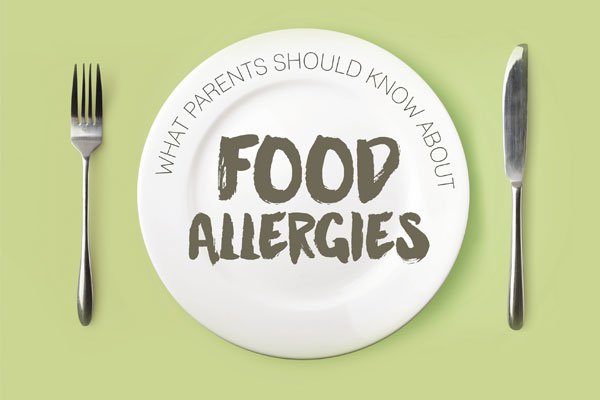Over the last several decades, food allergies among children have risen, with peanut allergies quadrupling over the last 20 years. A recent study in the New England Journal of Medicine has reshaped what many physicians are recommending to their patients.

food allergies
Dr. Kirsi Jarvinen-Seppo, director of the Center for Food Allergy at UR Medicine’s Golisano Children’s Hospital, spoke to us about what parents should be aware of.

Dr. Kirsi Jarvinen-Seppo
Dr. Kirsi Jarvinen-Seppo, director of the Center for Food Allergy at UR Medicine’s Golisano Children’s Hospital
What can you tell us about the recent rise in peanut and other food allergies?
The prevalence of food allergy among children is between 6 and 8 percent. In adults, it’s lower, mostly because some food allergies are outgrown by adulthood. But there is data suggesting that there has been a significant increase in peanut allergies. Peanut allergies are now four times as prevalent as they were in the early 90’s.
Why has it risen so quickly?
We can’t say for certain. But there was a recent study in the New England Journal of Medicine which showed that children who were initially classified as high-risk for peanut allergies were much more likely to actually develop those allergies if they avoided peanuts entirely. So it’s possible that avoiding peanuts in the early years of life – which was the recommendation of the old official feeding guidelines – actually contributed to the rise in peanut allergy. But this probably isn’t the whole picture and it’s likely that there are other factors contributing to the increase seen.
For the general population – if you child is not considered high-risk for peanut allergies – it’s reasonable to suggest that peanuts should be introduced by one year of age. The recommendation is to breastfeed for 4-6 months, exclusively if possible, and supplementing with formula if necessary. At that point, you can start introducing solid foods in addition to breastfeeding. Peanuts shouldn’t be the first thing that’s introduced – you may start with pureed fruits and vegetables, and oatmeal or rice cereal. But soon after, you may move on to meat, wheat, egg, fish, and peanuts. Basically, you want them eating all common table foods by 1 year of age.
For children who are considered high risk for peanut allergies – this includes infants who have already displayed allergies to other foods, or have severe eczema, or have a family history of peanut allergy – revised feeding recommendations reflecting the new study findings haven’t been released yet. The interim consensus document also leans toward early introduction of peanuts for infants at high-risk for peanut allergy, but before doing so, the child should first be evaluated by an allergy specialist to see when they should start trying certain foods.
You mentioned breastfeeding – why is that important?
The relationship between food allergy and breastfeeding hasn’t been well established and the data is pretty scarce. But there’s more data accumulating that suggest breastfeeding may prevent or postpone the development of asthma or eczema. Both of those are related conditions. Breastfeeding is also recommended for reasons unrelated to allergy.
What about a mother’s diet when she’s pregnant or breastfeeding? Can that play a role?
There really is no evidence to support that avoiding specific foods is going to prevent a food allergy, so that’s not an approach that is recommended. Mothers should be eating as varied a diet as they can to make sure they’re getting all their nutrients.
What about other common allergens, like eggs, wheat, and cow’s milk?
Eggs and wheat can be introduced between 4 and 12 months of age. There is no data suggesting the right time to introduce these foods in infants at high-risk of allergy, yet. Pure cow’s milk shouldn’t be introduced until one year of age, for reasons unrelated to allergy, although yogurt may be introduced prior to age 1 year.
What if a child already has an allergy? Can it be cured?
Unfortunately, right now, there’s little that we can do to cure food allergy. The good news is that many food allergies are outgrown. If your child is allergic to cow’s milk or eggs, chances are, he’ll eventually outgrow it. For those patients, we tend to reassess them on an annual basis.
Peanut allergies, however, are not typically outgrown. Only 20-25 percent of children do go on to outgrow it. There are currently research studies that are testing experimental approaches to see if immunotherapy – also known as desensitization – could treat food allergy. But so far, even these studies haven’t shown immunotherapy to be fully curative in most cases, although it can protect against reactions from accidental ingestions, especially to those to small and trace amounts in food.
What do you tell parents once their child is diagnosed with an allergy?
We have a lengthy discussion about many aspects of management of food allergy. First, we talk about diet and what needs to be avoided – about whether or not to avoid products that say “May contain peanuts,” for example. We talk about food substitutes, like soy or certain hypoallergenic baby formulas, that can be used instead of whatever the child can’t eat. And our clinic uses a multidisciplinary team approach, so patients also consult with dieticians to help make their menus. Some patients may also need to be evaluated by a gastroenterology specialist.
We also talk about how to manage food allergy in daycares, schools, and on play dates, and recommend that you simply bring your own food everywhere to avoid accidents.
We also address how to manage acute reactions, review how medications are administered and when to start switching responsibility from caretaker to child in managing reactions. And we provide emergency action plans, in writing, to caretakers, daycares and schools that outline what needs to happen if a child is exposed. We also review the natural history of specific food allergy and the plan for going forward in terms of retesting.
Views: 0






